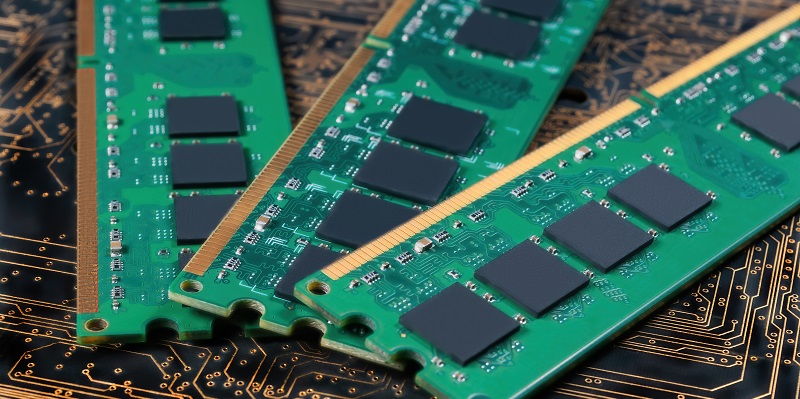The dynamic world of computer memory is about to face a shake-up as forecasters predict a significant increase in prices for DDR4 and DDR5 RAM. The anticipated rise is expected to occur in the final quarter of 2023, impacting both the DDR4 and DDR5 markets. This article explores the factors behind these predictions and offers advice to consumers on navigating the changing landscape of RAM pricing.
Forecast: DDR4 and DDR5 RAM prices set to increase
In a surprising turn of events, analysts are predicting that both DDR4 and DDR5 RAM prices will rise in the coming months. While experts initially projected that DDR4 prices would remain stable throughout this year, recent developments suggest a shift in the market. Furthermore, DDR5, the next-generation RAM, is also expected to experience an increase in prices.
Price increase for DDR4 memory sticks in Q4 2023
During the final quarter of 2023, DDR4 memory sticks are anticipated to undergo price hikes of up to 5%. This unforeseen change has caught many tech enthusiasts off guard, as DDR4 prices were not expected to rise until the following year. However, it appears that market forces have accelerated this development, signaling potential financial challenges for those planning to upgrade their systems.
Predicted rise in DDR5 prices
The impending release of DDR5 RAM, touted for its advanced performance and improved power efficiency, comes with its own set of challenges for consumers. TrendForce predicts that DDR5 prices may surge by up to 8%, making it a costly investment for early adopters. This forecast suggests that the transition to DDR5 may not be as affordable as initially anticipated.
Graphics DRAM is also expected to experience a price rise. Besides impacting DDR4 and DDR5 RAM, the graphics DRAM market is expected to face a price surge of up to 8%. This development will affect gamers and professionals who heavily rely on high-performance graphics cards. With rising prices across the board, consumers may need to reassess their budgetary considerations when planning for system upgrades.
Factors contributing to the price increase
The key driving force behind the upcoming price hikes is Samsung’s decision to reduce RAM production. By cutting production, Samsung aims to address the surplus stock in the market. This reduction in supply has created a ripple effect, causing a sudden scarcity of RAM modules in the market. Consequently, prices are forecasted to rise as demand outstrips supply.
PC makers are increasing their supply to beat an anticipated price rise. In response to the impending increase, they have begun stockpiling RAM modules to ensure a steady supply for their products. This increased demand from PC makers further contributes to the strain on the market, potentially exacerbating the already rising prices. As a result, consumers may experience difficulties in finding affordable RAM modules in the upcoming months.
Stock market correction impact on DDR5 and potentially DDR4
The ongoing stock market correction affecting the semiconductor industry is having a tangible impact on the RAM market. This correction is causing disruptions in the supply chain, leading to further uncertainty regarding DDR4 and DDR5 RAM pricing. Consequently, the market fluctuations may result in an even more volatile pricing scenario than previously anticipated.
Acceleration of DDR4 price rises earlier than anticipated
The sudden surge in DDR4 RAM prices, originally projected for the following year, has caught many consumers off guard. Consequently, experts recommend that now might be an opportune time to purchase DDR4 RAM before prices increase further. Being proactive in acquiring RAM modules will ensure that consumers can avoid potential financial constraints when upgrading their systems later on.
Manufacturers’ conservative production approach leading to potential future price increases
The conservative approach taken by RAM manufacturers in response to the current market conditions may have long-term implications. The reduction in production and limited supply may result in even higher price increases in the future. As the demand for RAM continues to grow, the industry must navigate a delicate balance between meeting market demands and avoiding excessive price inflation.
In conclusion, the RAM market is facing turbulent times ahead as DDR4 and DDR5 RAM prices are set to increase. Factors such as Samsung’s reduced production, PC makers’ stockpiling, and the ongoing stock correction affect both the supply and demand dynamics of the market. It is recommended that consumers take advantage of the current situation by purchasing DDR4 RAM before prices further skyrocket. Meanwhile, the transition to DDR5 RAM may pose financial challenges for early adopters due to the anticipated price surge. With manufacturers being cautious in their production approach, further price increases may threaten to impact the market in the future. In this ever-evolving landscape, it is crucial for consumers to stay informed and make informed decisions when upgrading their computer systems.

